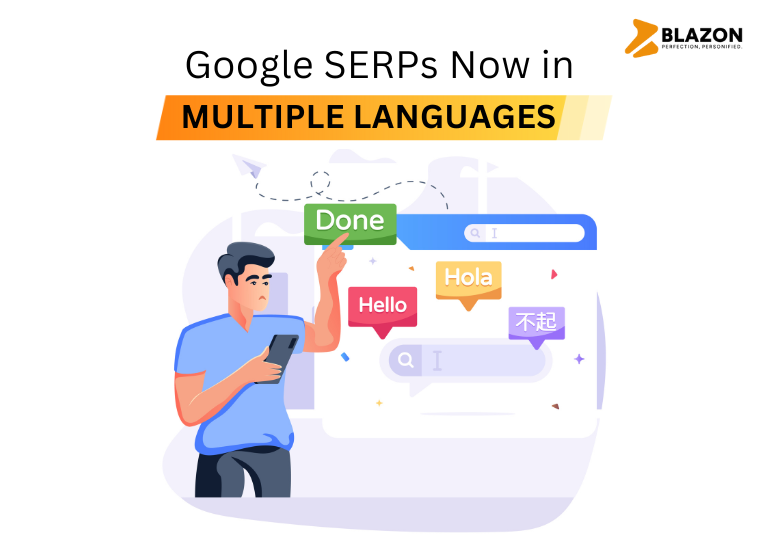In a world where communication knows no boundaries, language still presents a formidable barrier. The internet, with its vast repository of information, has always aimed to bridge this gap.
However, the dominance of English content has often left non-English speakers at a disadvantage. Enter Google’s latest innovation: SERPs (Search Engine Results Pages) in multiple languages.
This groundbreaking development promises to revolutionize the way we access information online, making it more inclusive and accessible to a global audience.
Let’s dive into what this means for users and businesses alike, and how it changes the landscape of online search.
Breaking Down the Language Barrier
Google’s decision to offer SERPs in multiple languages is a monumental step toward making the internet truly universal. Imagine searching for a topic in your native language and receiving results in the same language, irrespective of the original language of the content.
This seamless translation and presentation of search results ensure that users can access information in the language they are most comfortable with.
The implementation of multilingual SERPs means that Google can now automatically translate search results into the user’s preferred language.
This not only makes information more accessible but also enhances the user experience by providing relevant content in a comprehensible format.
The Languages Initially Supported Include
- Spanish
- French
- German
- Italian
- Portuguese
- Dutch
- Russian
- Chinese (Simplified and Traditional)
- Japanese
- Korean
- Arabic
- Hindi
- Bengali
- Indonesian
- Turkish
- Polish
- Vietnamese
- Thai
- Greek
- Czech
- Swedish
- Hungarian
- Finnish
- Danish
- Norwegian
- Hebrew
- Romanian
- Slovak
- Ukrainian
To learn more about this launch
This extensive list ensures that a significant portion of the global population can benefit from this innovation.
Enhancing User Experience
The primary beneficiary of this development is the end-user. Non-English speakers have often struggled with finding relevant information online due to language constraints.
With Google’s multilingual SERPs, users can now enjoy a more personalized search experience. Here’s how it enhances the user experience:
- Accessibility: Information is now accessible to users in their native language, breaking down the linguistic barriers that previously hindered them.
- Relevance: Multilingual SERPs ensure that users receive results that are contextually relevant and accurate, irrespective of the language of the original content.
- Convenience: The automatic translation feature saves users the hassle of manually translating pages, thereby providing a smoother and more convenient browsing experience.
Implications for Businesses
For businesses, this development opens up new avenues to reach a global audience. Companies can now target non-English speaking markets more effectively. Here’s what businesses can expect:
- Wider Reach: With content being accessible in multiple languages, businesses can tap into previously inaccessible markets, expanding their reach significantly.
- Enhanced SEO: Multilingual SERPs mean that businesses need to focus on optimizing their content for multiple languages. This can improve their visibility on a global scale.
- User Engagement: Offering content in multiple languages can lead to higher user engagement, as users are more likely to interact with content in their native language.
Adapting Your SEO Strategy
To make the most of Google’s multilingual SERPs, businesses need to adapt their SEO strategies. Here are some tips to help you get started:
- Multilingual Content: Invest in creating high-quality content in multiple languages. This doesn’t mean just translating your existing content but also localizing it to cater to the cultural nuances of different regions.
- Keyword Research: Conduct thorough keyword research for each target language. Understand the search behavior and preferences of users in different linguistic regions.
- Technical SEO: Ensure that your website is technically optimized for multilingual SEO. Use hreflang tags to indicate the language and region of your content, and ensure that your site structure supports multiple languages.
The Role of AI and Machine Learning
Google’s ability to offer multilingual SERPs is largely powered by advancements in AI and machine learning. These technologies enable Google to understand, translate, and present content in multiple languages accurately. Here’s how AI plays a crucial role:
- Translation Quality: AI algorithms have significantly improved the quality of translations, making them more accurate and contextually relevant.
- Contextual Understanding: Machine learning helps Google understand the context of the content, ensuring that translations maintain the original meaning and tone.
- Continuous Improvement: AI-driven systems continuously learn and improve from user interactions, ensuring that the quality of multilingual SERPs keeps getting better over time.
Challenges and Considerations
While Google’s multilingual SERPs are a game-changer, there are still challenges and considerations to keep in mind:
- Translation Accuracy: While AI translations have improved, they are not perfect. There can still be nuances and context that are lost in translation.
- Cultural Sensitivity: Businesses need to be mindful of cultural differences when creating content for different languages. What works in one culture may not work in another.
- Resource Investment: Creating and maintaining multilingual content requires a significant investment of time and resources.
A Step Towards Inclusivity
Google’s move to offer SERPs in multiple languages is a significant step towards a more inclusive internet. It acknowledges the diversity of its user base and strives to provide equal access to information, regardless of linguistic barriers.
For users, this means a more enriched and seamless browsing experience. For businesses, it opens up new opportunities to connect with a global audience.
Future Prospects
The introduction of multilingual SERPs is just the beginning. As AI and machine learning technologies continue to evolve, we can expect further enhancements in how search engines handle multiple languages. Here are some future prospects:
- Improved Voice Search: With the rise of voice assistants, we can expect multilingual voice search to become more sophisticated, allowing users to interact with search engines more naturally in their native languages.
- Deeper Localization: Beyond just language, future developments might focus on deeper localization, taking into account regional dialects, slang, and local preferences.
- Enhanced User Interfaces: User interfaces could become more adaptive, automatically adjusting to the user’s preferred language and presenting information in a more intuitive manner.
Conclusion
Google’s introduction of multilingual SERPs is a monumental step in making the internet more accessible and inclusive. It empowers users by providing them with information in their native languages, enhancing their online experience. For businesses, it opens up new opportunities to reach a broader audience and engage with them more effectively.
As we embrace this new era of multilingual search, it’s important for businesses to adapt their strategies and leverage this opportunity to connect with a global audience. The future of search is multilingual, and those who embrace this change will be well-positioned to thrive in a more connected world.
By breaking down language barriers, Google is not just enhancing the search experience but also fostering a more inclusive digital ecosystem. The internet is a vast and diverse space, and multilingual SERPs are a step towards ensuring that everyone, regardless of their language, can navigate it with ease and confidence.














